- Covering Grapes for Winter: A Complete Guide
- Why cover your grapes?
- Materials for covering grapes
- Techniques for covering grapes
- Conclusion
- Preparing for Winter: Why Covering Grapes is Essential
- Benefits of Covering Grapes:
- Materials for Covering Grapes:
- Techniques for Covering Grapes:
- Choosing the Right Time: When to Start Covering Grapes
- Factors to Consider
- General Guidelines
- Conclusion
- Selecting the Best Materials: Options for Grape Covers
- 1. Burlap:
- 2. Plastic Sheeting:
- 3. Agrofabric:
- 4. Straw or Hay:
- 5. Polystyrene or Foam Boards:
- Grape Covering Techniques: Step-by-Step Instructions
- 1. Prune Grape Vines
- 2. Gather Necessary Materials
- 3. Wrap Lower Portion of the Vine
- 4. Cover the Entire Vine
- 5. Secure Covers with Weights
- 6. Inspect Regularly
- 7. Remove Covers in Spring
- 8. Store Covers Properly
- Ensuring Proper Insulation: Tips for Keeping the Grapes Warm
- Protecting Against Pests: Preventing Damage to Grape Vines
- 1. Identify and Monitor Pest Activity
- 2. Implement Cultural Practices
- 3. Use Organic Pest Control Methods
- 4. Utilize Physical Barriers
- 5. Regularly Clean and Maintain the Vineyard
- Monitoring and Maintaining: Checking on Covered Grapes During Winter
- 1. Check for Damage
- 2. Assess for Moisture
- 3. Ventilate Properly
- 4. Inspect for Pests
- 5. Snow Removal
- 6. Adjust Insulation
- 7. Be Prepared for Extreme Weather
- Uncovering Grapes in Spring: When and How to Remove the Covers
- 1. Timing
- 2. Removing the Covers
- 3. Post-Uncovering Care
- Question-answer:
- Why is it important to cover grapes for winter?
- What materials can be used to cover grapes for winter?
- How do you lay the materials to cover grapes for winter?
- When should grapes be covered for winter?
- Can I leave grapes uncovered during winter?
- Are there any techniques I should follow when covering grapes for winter?
- Video: How To Build A Grape Vine Support Trellis. The MOST Popular Type.
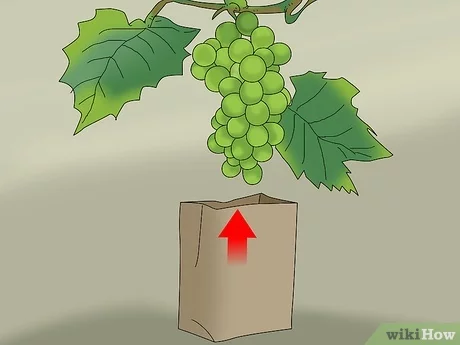
As the winter months approach, it’s crucial to properly protect your grapevines to ensure their survival and productivity for the next growing season. Covering grapes for winter is an important practice that can shield your plants from harsh weather conditions and prevent frost damage. In this comprehensive guide, we will explore the various methods, materials, and techniques available for effectively covering your grapevines during the winter months.
One of the key considerations when covering grapes for winter is the method of laying the covers. There are several options available, including individual vine covers, row covers, or even erecting a temporary structure. The choice of method depends on factors such as the size and layout of your vineyard, the climate in your region, and the level of protection required. Each method has its advantages and disadvantages, and we will delve into each option in detail to help you decide which one suits your needs best.
In addition to the laying method, the choice of materials is also paramount when covering grapes for winter. The right materials can provide insulation, protect against wind and frost, and create a favorable microclimate for your grapevines. Various materials, including frost blankets, plastic sheeting, and straw, can be used for covering. Each material has its unique features, and we will explore their differences, benefits, and drawbacks, enabling you to make an informed decision based on your specific requirements and climatic conditions.
Finally, we will discuss the different techniques for effectively securing the covers in place. Keeping the covers secure is essential to prevent them from being blown away by strong winds or becoming displaced due to heavy snowfall. This guide will outline various techniques, such as using clips, stakes, or weights, to ensure that the covers stay in place and provide optimum protection throughout the winter season.
By following the tips and recommendations in this complete guide, you can confidently cover your grapevines for winter and increase their chances of surviving the colder months unscathed. Ensuring that your grapevines are adequately protected during this critical period will help promote healthy growth and abundant fruit production when spring arrives.
Контекст:
Covering Grapes for Winter: A Complete Guide
Why cover your grapes?
Covering your grape vines during winter can help protect them from freezing temperatures, frost damage, and other adverse weather conditions. By providing a protective layer, you can ensure the health and vitality of your grapes for the upcoming growing season. Here’s a complete guide on laying, materials, and techniques for covering grapes in winter.
Materials for covering grapes
Before starting the process of covering your grape vines, gather the necessary materials. These include:
- Winter mulch: Using straw, hay, or wood chips as a protective layer can insulate the vines and retain soil moisture.
- Plastic sheeting: Heavy-duty plastic can shield the vines from rain, snow, and wind, while allowing sunlight to pass through.
- Stakes or poles: These will be used to support and secure the plastic sheeting.
- Twine or zip ties: These will help fasten the plastic sheeting to the stakes or poles.
Techniques for covering grapes
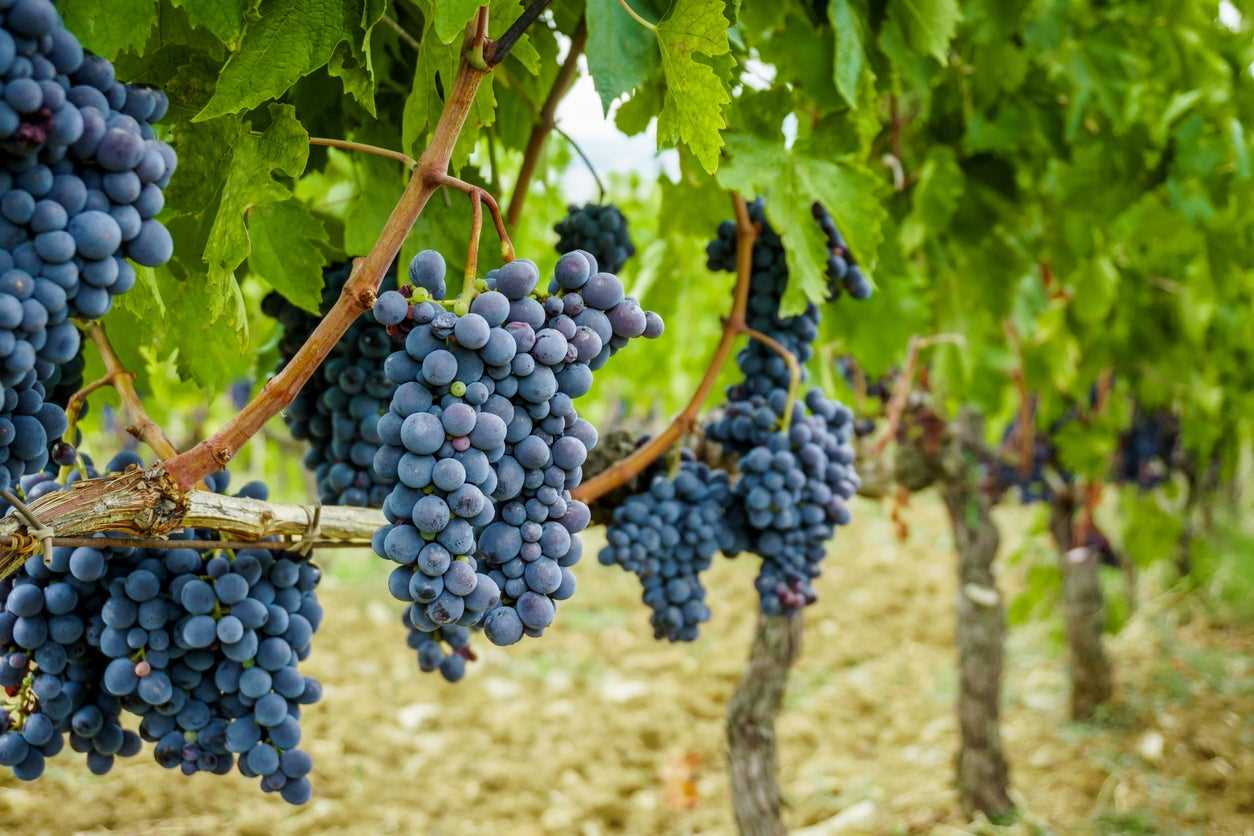

Follow these steps to effectively cover your grape vines for winter:
- Prune and clean the vines: Before covering, remove any dead or diseased branches, as well as any remaining fruit clusters. This will help prevent pests and diseases from overwintering.
- Secure stakes or poles: Install stakes or poles around the grape vines, ensuring they are firmly anchored in the ground.
- Attach plastic sheeting: Unroll the plastic sheeting and attach it to the stakes or poles using twine or zip ties. Make sure the sheeting covers the entire grape vine area.
- Insulate with winter mulch: Spread a thick layer of winter mulch around the base of each grape vine, covering the roots and lower portion of the trunk. This will provide additional insulation and protect against extreme temperatures.
- Monitor and adjust: Throughout the winter season, periodically check the coverings to ensure they are intact and in good condition. Make any necessary adjustments or repairs as needed.
Conclusion
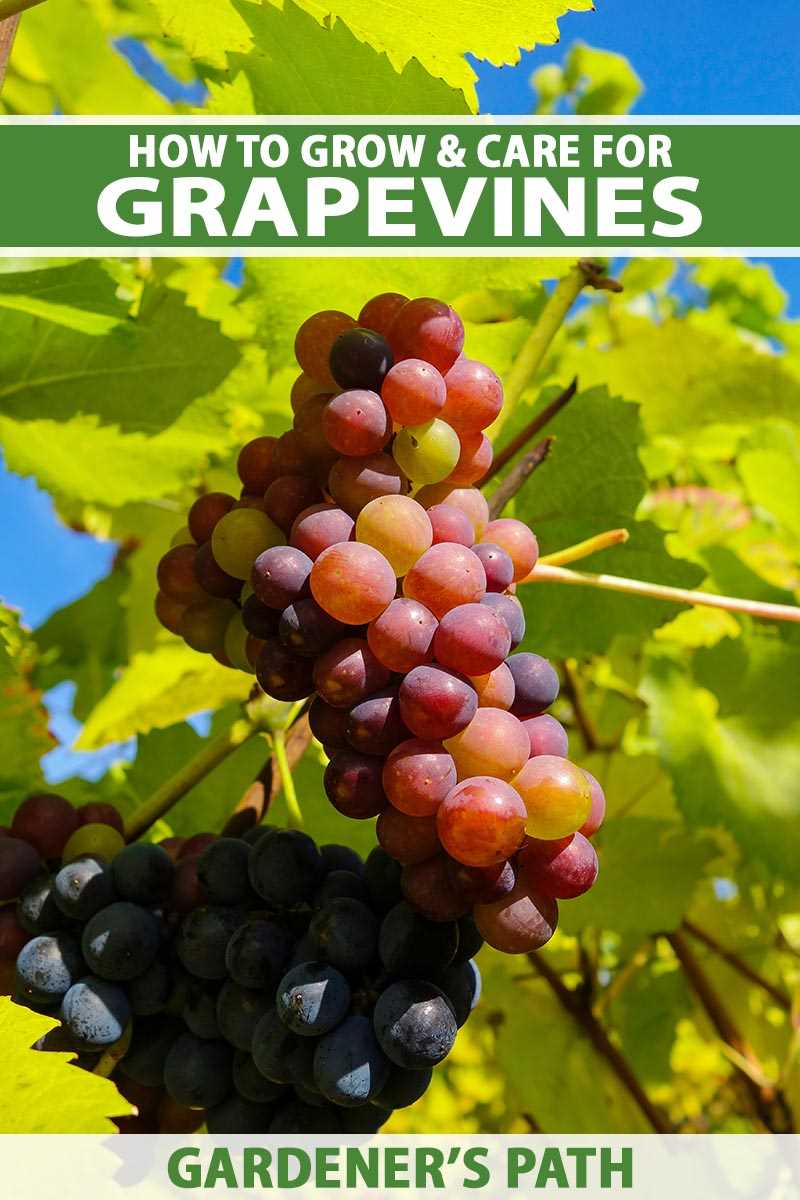

By following this complete guide on covering grapes for winter, you can protect your grape vines from harsh weather conditions and increase their chances of thriving in the next growing season. Remember to gather the necessary materials, use proper techniques, and monitor the coverings regularly. With proper care, your grapes will be well-prepared to produce bountiful and delicious harvests.
Preparing for Winter: Why Covering Grapes is Essential
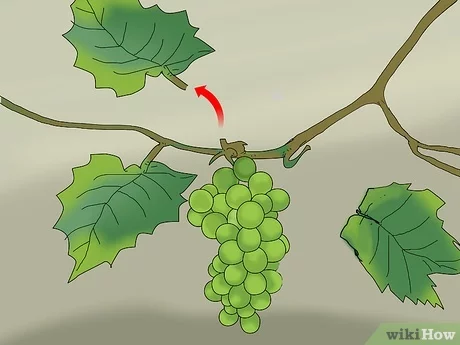

As the temperature starts to drop and the first frost of the season approaches, it is essential to prepare your grapevines for the harsh winter conditions. By covering your grapevines, you can protect them from the cold temperatures, strong winds, and potential damage caused by freezing and thawing cycles.
Benefits of Covering Grapes:
- Protection from frost: Grapevines are susceptible to frost damage, especially when the temperatures drop below freezing. By covering them, you can create a barrier that helps to retain heat and prevent the vines from freezing.
- Prevention of winter injury: The freezing and thawing cycles during winter can cause damage to the grapevines, leading to cracks in the bark and potential dieback. By providing a protective layer, you can minimize the risk of winter injury.
- Reduced wind damage: Strong winds can break the delicate branches of grapevines and cause structural damage. Covering the vines can act as a windbreak, reducing the impact of strong winds.
Materials for Covering Grapes:
There are several materials that you can use to cover your grapevines, including:
- Row covers: These lightweight fabrics allow sunlight, air, and rain to reach the plants while providing protection from cold temperatures and frost.
- Tarps or plastic sheets: These materials provide a more effective insulation against the cold, but should be removed during the day to allow for ventilation and prevent overheating.
- Straw or mulch: By applying a layer of straw or mulch around the base of the grapevines, you can provide insulation and protect the roots from freezing.
Techniques for Covering Grapes:
When covering your grapevines, it is important to ensure that the material is securely fastened and provides adequate coverage. Here are some techniques you can use:
- Drape the material: Gently drape the covering material over the grapevines, ensuring that it reaches the ground on all sides.
- Secure with stakes or weights: Use stakes or weights to secure the material in place, preventing it from being blown away by strong winds.
- Leave room for ventilation: Make sure to leave some openings or gaps in the covering to allow for airflow and prevent overheating.
By taking the time to cover your grapevines before winter, you can protect them from the harsh elements and ensure their survival until the warmer weather returns. Remember to remove the coverings in the spring to allow for proper growth and development.
Choosing the Right Time: When to Start Covering Grapes
Knowing when to start covering your grape vines for winter is essential for their protection and survival during the colder months. The timing will vary depending on your region and the specific climate conditions, so it’s important to be aware of these factors when determining when to start covering your grapes.
Factors to Consider
- Temperature: Monitoring the temperature is crucial in deciding when to cover your grape vines. Once the temperatures consistently drop below freezing (32°F or 0°C), it’s time to start preparing for winter.
- Grape Variety: Different grape varieties have varying levels of cold hardiness. Some grapes are more resistant to low temperatures, while others are more susceptible to frost damage. Understanding the cold hardiness of your specific grape variety will help you determine the appropriate timing for covering.
- Growth Stage: The growth stage of your grape vines also plays a role in when to start covering them. If your grapes are still actively growing or have not fully hardened off, it’s important to wait until the vines have completed their growth cycle before covering them.
General Guidelines
While the specific timing may differ based on the factors mentioned above, there are some general guidelines to follow when deciding when to start covering your grape vines:
- Monitor the Weather: Keep a close eye on the weather forecast, paying attention to any potential frost or freeze warnings.
- Consider Location: If your grape vines are located in a low-lying area that is more prone to frost or colder temperatures, you may want to start covering them earlier.
- Observe Surrounding Vegetation: Look for signs of frost damage on other plants in your area. If you notice damage, it’s a good indication that you should start covering your grapes.
Conclusion
Choosing the right time to start covering your grape vines for winter is essential for their protection. By considering factors such as temperature, grape variety, and growth stage, and following general guidelines, you can ensure that your grapes are properly covered and prepared for the colder months ahead.
Selecting the Best Materials: Options for Grape Covers
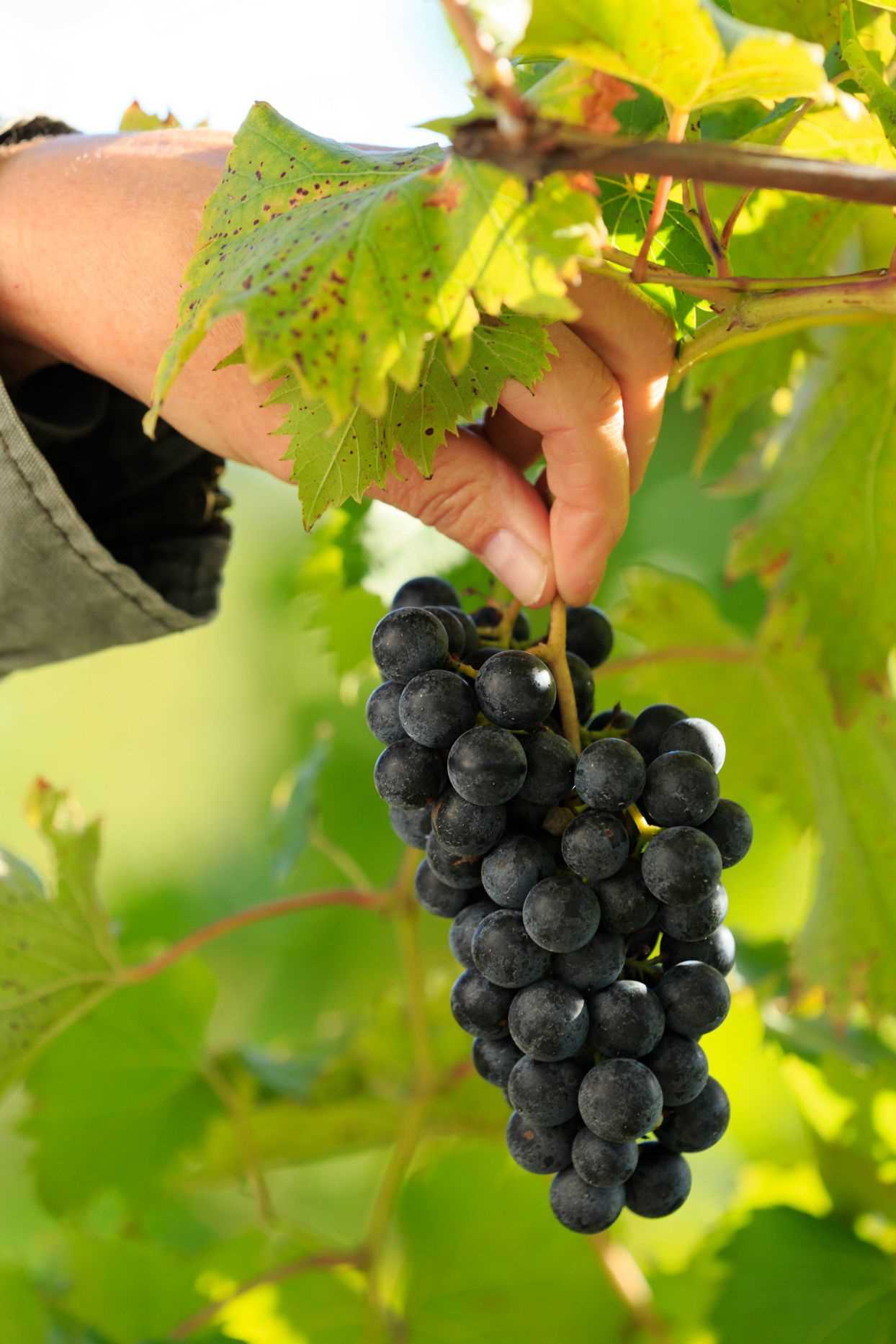

When it comes to covering your grape vines for winter, there are several materials to choose from. The best option for you will depend on your specific climate, the size of your vineyard, and your budget. Here are some popular materials for grape covers:
1. Burlap:
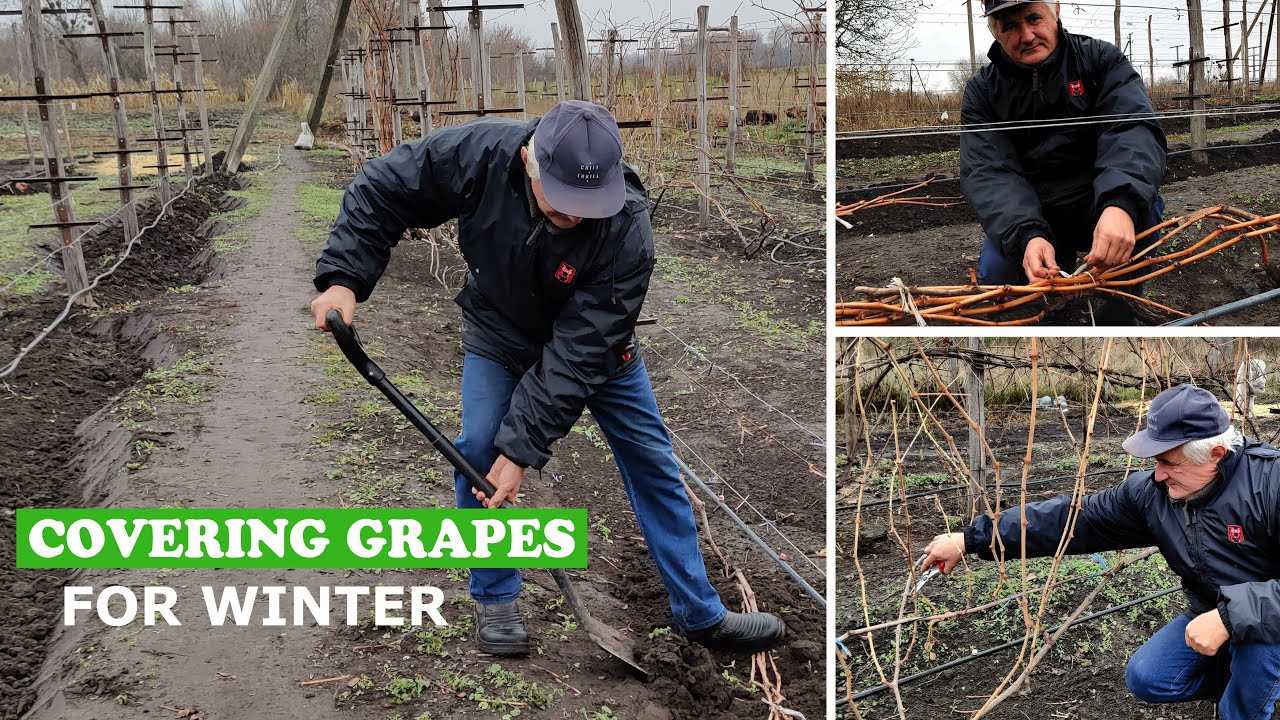

- Burlap is a common choice for covering grapevines in colder regions.
- It is affordable and provides some protection against frost and cold temperatures.
- However, burlap may not offer enough insulation in extremely cold climates.
2. Plastic Sheeting:
- Plastic sheeting is a versatile option that can provide excellent protection against frost, wind, and snow.
- Choose a heavy-duty plastic that is UV-stabilized to prevent damage from the sun.
- Ensure the plastic is tightly secured to prevent it from blowing off in strong winds.
3. Agrofabric:
- Agrofabric, also known as row cover or frost cloth, is a lightweight material that provides excellent frost protection.
- It allows air, light, and water to pass through while creating a microclimate around the plants.
- Agrofabric can be used alone or in combination with other materials.
4. Straw or Hay:
- Straw or hay can be used as a natural insulation material for grapevines.
- It provides good protection against frost and keeps the soil temperature more stable.
- Ensure the straw or hay is thick enough to provide adequate insulation.
5. Polystyrene or Foam Boards:
- Polystyrene or foam boards can be used to create a barrier around the grapevines.
- They provide excellent insulation and are lightweight and easy to handle.
- Secure the boards firmly in place to prevent them from shifting during strong winds.
Remember to consider the specific needs of your grapevines and the climate in your area when selecting the materials for your grape covers. With the right materials, you can ensure the survival of your grapevines through the winter months.
Grape Covering Techniques: Step-by-Step Instructions
1. Prune Grape Vines
Before covering your grape vines for winter, it’s important to prune them properly. Remove any dead or diseased wood, and cut back the remaining canes to a length of about 12-15 inches. This will ensure that the vines are in good health and can withstand the winter months.
2. Gather Necessary Materials
Next, gather all the materials you will need for covering your grape vines. This may include frost blankets, burlap, row covers, or any other suitable protective material. Make sure you have enough material to cover all the vines in your vineyard.
3. Wrap Lower Portion of the Vine
Start by wrapping the lower portion of each grape vine with the chosen material. This will provide extra protection to the base of the vines, which is more susceptible to damage from freezing temperatures.
4. Cover the Entire Vine
Continue by covering the entire length of each vine, working from the bottom up. Be sure to overlap the material slightly as you go, to prevent any gaps that cold air could penetrate. Use clips or twine to secure the material in place.
5. Secure Covers with Weights
To prevent the wind from blowing the covers off, secure them with weights. This could be bricks, rocks, or anything heavy enough to keep the covers in place without causing damage to the vines.
6. Inspect Regularly
Throughout the winter, it’s important to regularly inspect the covers to ensure they are still in place and providing adequate protection. If any covers have come loose or have become damaged, repair or replace them as necessary.
7. Remove Covers in Spring
When spring arrives and the threat of frost has passed, it’s time to remove the covers from your grape vines. Carefully unwrap the material from each vine, taking care not to damage any new growth that may have emerged.
8. Store Covers Properly
After removing the covers, be sure to clean them and store them properly for future use. This will extend their lifespan and ensure that they are ready for the next winter season.
By following these step-by-step instructions for grape covering techniques, you can help protect your grape vines from winter weather and ensure a successful growing season.
Ensuring Proper Insulation: Tips for Keeping the Grapes Warm
Ensuring proper insulation is crucial to keeping grapes warm during the winter months. By protecting the vines from extreme cold temperatures, you can help prevent damage and ensure a successful harvest in the following year. Here are some tips to help you keep your grapes warm:
- Choose the right covering material: Select a material that provides good insulation, such as burlap or woven fabric. These materials can help trap heat and protect the grapes from freezing temperatures.
- Properly layer the covering: Layering the covering material is important for maximum insulation. Start by wrapping the vines with a layer of straw or bubble wrap to provide an additional layer of insulation. Then, cover the entire vine with the chosen material, making sure it is secure and snug.
- Avoid plastic coverings: While plastic coverings may seem like a convenient option, they can actually trap moisture and cause the vines to rot. It is best to opt for breathable materials that allow air circulation.
- Secure the covering: Make sure the covering is securely fastened to the ground or trellis to prevent it from being blown away by strong winds. This will help maintain the insulation and protect the vines from cold drafts.
- Consider using insulating devices: Insulating devices, such as frost blankets or frost tubes, can provide additional protection for the grapes. These devices are designed to trap heat and create a microclimate around the vines, keeping them warm even in extremely cold temperatures.
- Remove the coverings gradually: Once the winter season is over and the temperatures start to rise, remove the coverings gradually. This will allow the vines to acclimate to the changing temperatures and prevent any sudden shocks that could damage the grapes.
By following these tips, you can ensure proper insulation for your grapes and protect them from the harsh winter conditions. Remember to check on your vines regularly and make any necessary adjustments to the coverings to maintain optimal insulation.
Protecting Against Pests: Preventing Damage to Grape Vines
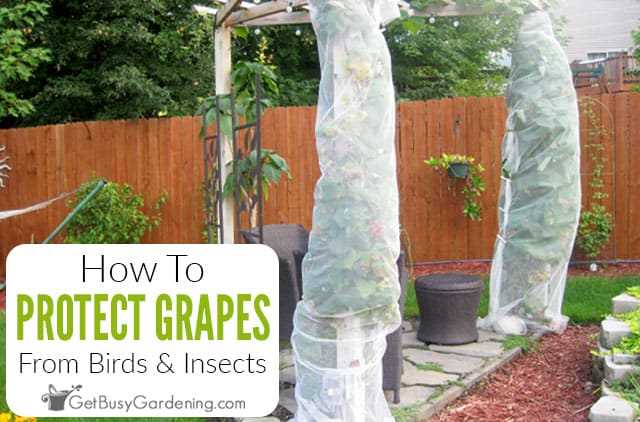

Grape vines are susceptible to a variety of pests that can cause damage to the plants and their fruit. To ensure healthy grape vines and a successful harvest, it’s important to take measures to protect against these pests. Here are some tips and techniques for preventing damage to grape vines:
1. Identify and Monitor Pest Activity
It’s important to be able to identify common pests that affect grape vines, such as aphids, grape moth larvae, and spider mites. Regularly inspect the vines for signs of pest activity, including discolored leaves, wilting, and the presence of insects. Monitoring pest activity can help you take action before the infestation becomes severe.
2. Implement Cultural Practices
Cultural practices can play a significant role in preventing pest damage to grape vines. Here are a few practices to consider:
- Pruning: Properly pruning grape vines can improve air circulation and reduce the risk of fungal diseases that can attract pests.
- Sanitation: Removing fallen leaves and grape clusters can help eliminate potential breeding grounds for pests.
- Planting Cover Crops: Planting cover crops like clover or grasses can attract beneficial insects that prey on pests.
- Proper Irrigation: Avoid over-watering grape vines as excessive moisture can create favorable conditions for pests.
3. Use Organic Pest Control Methods
When it comes to pest control, organic methods are preferable as they minimize the use of harmful chemicals. Here are some organic pest control methods for grape vines:
- Introduce Beneficial Insects: Release beneficial insects like ladybugs or lacewings that feed on pests.
- Apply Natural Predators: Use natural predators like nematodes or predatory mites to control pests.
- Use Organic Sprays: Apply organic sprays, such as neem oil or insecticidal soaps, to deter pests.
4. Utilize Physical Barriers
Physical barriers can be effective in preventing pests from reaching the grape vines. Here are a few options to consider:
- Netting: Install bird netting or insect netting to protect grapes from birds and insects.
- Collars: Place collars around the base of grape vines to prevent crawling pests from reaching the plants.
- Traps: Use traps, such as pheromone traps, to catch and monitor specific pests like grape moths.
5. Regularly Clean and Maintain the Vineyard
A clean and well-maintained vineyard is less likely to attract pests. Regularly remove weeds, fallen leaves, and debris from the vineyard. Prune and maintain the grape vines to prevent overgrowth and improve overall plant health.
By implementing these strategies, you can protect your grape vines against pests and promote healthy growth and fruit production.
Monitoring and Maintaining: Checking on Covered Grapes During Winter
Once you have covered your grape plants for the winter, it is important to regularly check on them to ensure they are protected and to make any necessary adjustments. Monitoring and maintaining the coverings will help ensure the health and survival of your grape plants during the cold winter months.
1. Check for Damage
Inspect the coverings for any signs of damage caused by wind, snow, or animals. Look for tears, rips, or holes in the material that could allow cold air or moisture to penetrate. If you find any damage, repair or replace the covering immediately to maintain the insulation and protection.
2. Assess for Moisture
Check the moisture levels inside the coverings. Excessive moisture can lead to fungal diseases and rot, while too little moisture can cause dehydration. To assess moisture levels, carefully touch the soil beneath the covering. If it feels overly wet or dry, adjust the covering accordingly.
3. Ventilate Properly
Proper ventilation is crucial to prevent the buildup of excessive moisture and to allow proper air circulation. Ensure that there are sufficient openings or vents in the coverings to allow air exchange. However, be cautious not to create too much exposure that could lead to freezing or frost damage.
4. Inspect for Pests
Regularly check for any signs of pests that may have taken refuge under the coverings. Look for insect eggs, mites, or other pests that may be hiding on the grape plants or in the surrounding soil. If you notice any infestations, take appropriate measures to control and eliminate the pests.
5. Snow Removal
If heavy snow accumulates on the coverings, carefully remove it to prevent excess weight that may damage the coverings or grape plants underneath. Use a broom or soft brush to gently sweep off the snow. Avoid using forceful movements or sharp objects that can puncture or tear the coverings.
6. Adjust Insulation
Monitor the temperature inside the coverings and make adjustments to the insulation when necessary. This can be done by adding or removing additional layers or materials to regulate the temperature and provide adequate protection. Use a thermometer to check the temperature inside the coverings periodically.
7. Be Prepared for Extreme Weather
Keep an eye on the weather forecast and be prepared for extreme weather conditions. Strong winds, heavy snowfall, or sudden temperature drops can pose a risk to the coverings and your grape plants. Take proactive measures, such as reinforcing the coverings or providing extra insulation, to protect your plants during such events.
By regularly monitoring and maintaining your covered grapes during winter, you can ensure their survival and promote healthy growth when spring arrives. Follow these tips to keep your grape plants protected and thriving throughout the cold season.
Uncovering Grapes in Spring: When and How to Remove the Covers
After a long winter, it is finally time to uncover your grapes in the spring. Proper timing and techniques are essential to ensure the health and vitality of your grapevines. Here is a complete guide on when and how to remove the covers from your grapes.
1. Timing
The timing of uncovering your grapes will depend on the climate and weather conditions in your area. It is crucial to wait until the danger of frost has passed before removing the covers. Frost can damage the tender new growth of the grapevines and affect their productivity for the rest of the season.
Monitor the weather forecast and keep a close eye on nighttime temperatures. Once the overnight temperatures consistently stay above freezing and there is no risk of frost, it is safe to uncover your grapes.
2. Removing the Covers
The process of removing the covers from your grapes should be done carefully to avoid damaging the vines.
- Inspect the covers: Before removing the covers, inspect them for any signs of damage or deterioration. If the covers have become torn or damaged during the winter, they may need to be replaced.
- Untie or remove the fasteners: If your covers are secured with ties or fasteners, carefully untie or remove them to release the cover from the grapevines. Be gentle to avoid snapping or breaking any new growth.
- Remove the covers: Slowly and gradually remove the covers from the grapevines. Avoid pulling or tugging too forcefully, as this can cause damage to the vines or buds.
- Gently prune: As you remove the covers, take the opportunity to inspect the grapevines for any damaged or diseased parts. Prune them off carefully to promote healthy growth.
Remember to handle the grapevines with care throughout the process to prevent any unnecessary stress or damage.
3. Post-Uncovering Care
After uncovering your grapes, provide them with proper care to support their growth and development.
- Watering: Depending on your climate and weather conditions, water the grapevines as needed. Ensure they receive adequate moisture for healthy growth.
- Fertilization: Apply a balanced fertilizer to provide the necessary nutrients for the grapevines. Follow the instructions on the fertilizer packaging for appropriate dosage and application method.
- Monitor for pests and diseases: Keep a close eye on your grapevines for any signs of pests or diseases. Early detection and intervention can prevent serious damage to the plants.
- Support and training: As the grapevines start to grow, provide proper support and training. Install trellises or stakes to guide the vines and promote optimal fruit production.
By following these guidelines, you can ensure a successful transition from winter to spring for your grapevines. Remember to be patient and attentive to the needs of your plants, and they will reward you with a bountiful harvest.
Question-answer:
Why is it important to cover grapes for winter?
It is important to cover grapes for winter to protect them from extreme cold temperatures, frost, and wind. This helps prevent damage to the vines and can promote healthier growth in the spring.
What materials can be used to cover grapes for winter?
There are several materials that can be used to cover grapes for winter. Some common options include burlap, plastic, straw, and leaves. These materials can help insulate the vines and protect them from the elements.
How do you lay the materials to cover grapes for winter?
To lay the materials to cover grapes for winter, start by wrapping the vines with the chosen material. Ensure that the entire vine is covered, including the top and sides. Secure the material in place using twine or clips, making sure it is tight enough to stay in place but not too tight to damage the vines.
When should grapes be covered for winter?
Grapes should be covered for winter before the first frost or when temperatures start to drop consistently below freezing. It is important to cover them before the cold weather sets in to provide proper protection.
Can I leave grapes uncovered during winter?
Leaving grapes uncovered during winter can expose them to potential damage from freezing temperatures, frost, and wind. It is recommended to cover grapes to provide insulation and protection during the colder months.
Are there any techniques I should follow when covering grapes for winter?
When covering grapes for winter, it is important to ensure that the materials are properly secured and tightly wrapped around the vines. It is also recommended to leave some ventilation to prevent moisture buildup, which can lead to disease or rot. Additionally, be mindful of the weight of the covering material, as too much weight can damage the vines.







